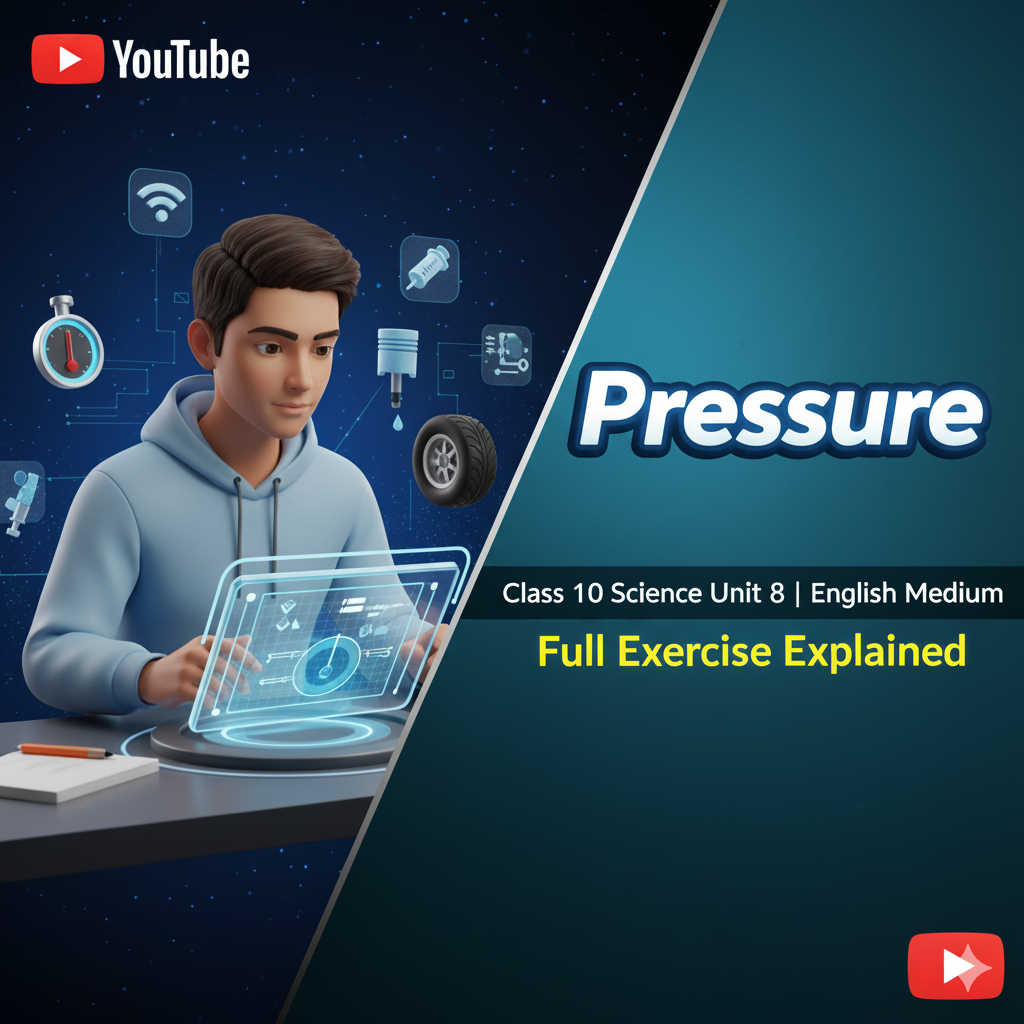Master Class 10 Science Unit 8: Complete Pressure Exercise Guide with Solutions
Welcome to our comprehensive guide for Class 10 Science Unit 8 focusing on the fundamental concept of Pressure. This essential physics topic is crucial for your SEE examination and lays the foundation for understanding fluid mechanics in higher studies. In this detailed post, we’ll explore all exercise questions from Class 10 Science Unit 8 with step-by-step solutions, practical examples, and expert tips to help you master this important chapter.
Class 10 Science Unit 8 Exercise PDF
Below you’ll find the complete exercise for Class 10 Science Unit 8 presented in an embedded PDF format. You can view the entire exercise directly on this page.
Understanding Class 10 Science Unit 8: Pressure Fundamentals
The concept of pressure in Class 10 Science Unit 8 is a fundamental principle that explains how forces distribute over surfaces. This chapter introduces you to various types of pressure including atmospheric pressure, liquid pressure, and their practical applications in daily life.
Key Concepts in Class 10 Science Unit 8
Before diving into the exercise solutions, let’s review the essential concepts covered in Class 10 Science Unit 8:
- Definition of pressure and its mathematical formula (P = F/A)
- Atmospheric pressure and its measurement
- Pressure in liquids and Pascal’s principle
- Applications of pressure in hydraulic systems
- Relationship between pressure, force, and area
Important Note for Class 10 Science Unit 8
Pressure is a scalar quantity, meaning it has magnitude but no specific direction. Understanding this distinction from vector quantities like force is crucial for solving problems correctly in Class 10 Science Unit 8. Always remember that pressure acts perpendicular to the surface area it’s applied to.
Step-by-Step Solutions for Class 10 Science Unit 8 Exercise
Now let’s examine some key problems from the Class 10 Science Unit 8 exercise with detailed explanations:
Problem 1: Calculating Pressure Exerted by a Solid
A rectangular block with dimensions 2m × 1m × 0.5m and mass 100kg is placed on a horizontal surface. Calculate the pressure exerted on the surface.
Solution: First, we calculate the force (F = m × g = 100 × 9.8 = 980N). The area in contact with the surface will be the largest face (2m × 1m = 2m²). Therefore, pressure P = F/A = 980/2 = 490 Pa.
Problem 2: Understanding Liquid Pressure
Explain why dams are constructed with thicker walls at the bottom compared to the top.
Solution: In Class 10 Science Unit 8, we learn that liquid pressure increases with depth. Water pressure at the bottom of a dam is much greater than at the top due to the weight of the water above. Therefore, dams need thicker walls at the bottom to withstand this increased pressure.
Problem 3: Application of Pascal’s Law
Describe how Pascal’s law is applied in hydraulic lifts with a simple diagram.
Solution: Pascal’s law states that pressure applied to an enclosed fluid is transmitted undiminished to every portion of the fluid and the walls of the containing vessel. In hydraulic lifts, a small force applied to a small-area piston creates pressure that is transmitted to a larger-area piston, resulting in a magnified force that can lift heavy objects.

Additional Resources for Class 10 Science Unit 8
To further enhance your understanding of Class 10 Science Unit 8, we recommend exploring these valuable external resources:
- Official Curriculum Development Centre Nepal – For the latest syllabus and updates
- CDC Digital Library – Access to additional educational materials
- Social Guide Learning Platform – Alternative explanations and practice problems
- YouTube Video Explanation – Visual learning resource for pressure concepts
Exam Preparation Tip
When studying Class 10 Science Unit 8, focus on understanding the conceptual basis of pressure rather than just memorizing formulas. This approach will help you tackle both theoretical questions and numerical problems effectively in your SEE examination.
Mastering Class 10 Science Unit 8: Final Thoughts
Congratulations on completing this comprehensive guide to Class 10 Science Unit 8 on Pressure! We’ve covered all essential aspects of this important chapter, from fundamental concepts to detailed exercise solutions. Remember that consistent practice and conceptual clarity are key to excelling in this topic. Revisit the problems regularly, attempt additional questions from reference books, and don’t hesitate to seek help if you encounter difficulties. With dedicated effort, you’ll master Class 10 Science Unit 8 and be well-prepared for your examinations.
For more educational resources and study guides, explore our website’s science section where you’ll find materials for all units of Class 10 Science.
